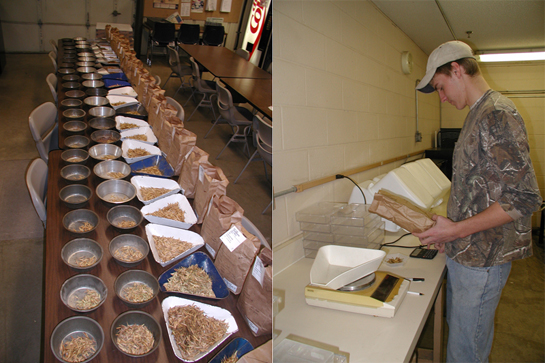| Preview Area |

|
The North Central Regional Plant Introduction Station (NCRPIS) is part of the National Plant Germplasm System and is a collaboration between the USDA-ARS, Iowa State University, and the North Central Regional Agricultural Experiment Stations: Illinois, Indiana, Iowa, Kansas, Michigan, Minnesota, Missouri, Nebraska, North Dakota, Ohio, South Dakota, Wisconsin. The NCRPIS is located in Ames, Iowa, USA and was established in 1948.
Our mission is to conserve genetically-diverse crop germplasm and associated information, conduct germplasm-related research, and encourage the use of germplasm and associated information for research, crop improvement and product development.
Links of interest:

Mark Widrlechner with part of the ash seed collection at NCRPIS. The distribution lots are stored at 5 ?C and 30% relative humidity.
Photo by Bob Elbert, Iowa State University.
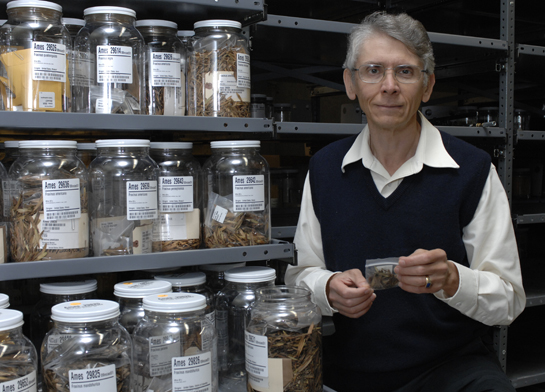
Emerald Ash Borer (adults) and tree damage from larvae.
Photos shown here are from US Forest Service. Emerald Ash Borer photos taken by David Cappaert.
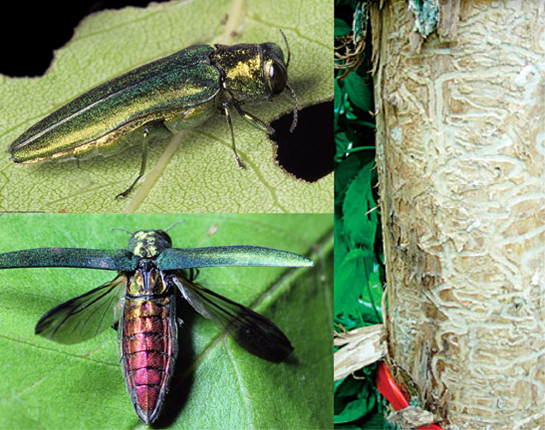
Ash tree and Emerald Ash Borer (EAB) distribution.
Main map shows ash tree distribution for Green Ash (Fraxinus pennsylvanica) on USGS map. Inset map, which shows EAB distribution as of October 2009, is from the Emerald Ash Borer Information website.
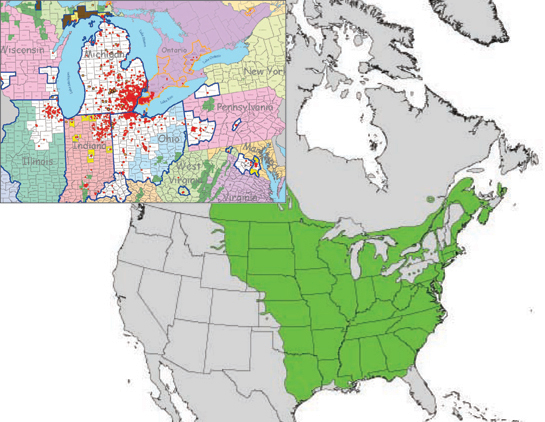
Collecting ash seed is not always easy. This combined image shows Jeff Carstens scaling a tree and using a pole saw.

Jeff Carstens with a branch of harvested ash seed.
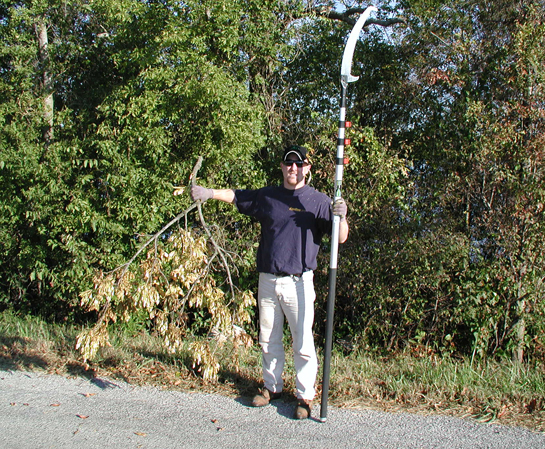
Collecting ash seeds does not always require climbing the trees and using a pole saw. Here Mark Widrlechner collects seed from a lower limb.

Stating the obvious: the beauty of ash trees is worth saving.
The photo of White Ash (Fraxinus americana) shown here is from www.forestryimages.org. Photographer: Richard Webb, Self-employed horticulurist, Bugwood.org.
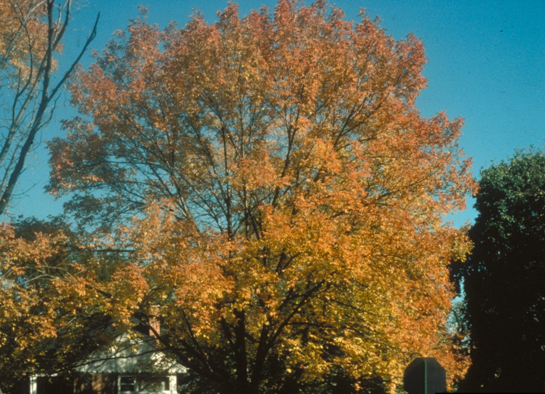
Ash seed processing. Seeds are cleaned, weighed, and 'balance-sampled' before storing. Shown here is Matt Fouts weighing the seeds and determining the total number for the accession based on a hundred-seed weight.

Mark Widrlechner pours ash seed into a seed tray. The collection is periodically inventoried to make sure seed count numbers are accurate. The distribution lots are stored in wide-mouth plastic jars for easy access to package for shipping.
Photo by Bob Elbert, Iowa State University.

Ash seed long-term collection in the freezer. The freezer is kept at -18 ?C.
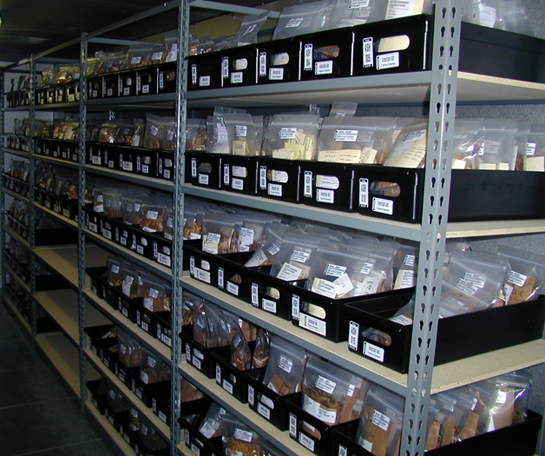
The emerald ash borer (EAB) was accidentally introduced to North America from Asia. North American Fraxinus species evidently have no resistance to this pest. Since its introduction in the vicinity of Detroit, it has devastated native Fraxinus populations in Michigan, Indiana, Ohio, and Ontario, and it continues to spread. The loss of these species has cultural, ecological, and economic implications that warrant preserving the genetic resources before too much is lost to the insect. Trees, as do all plants, must be adapted to their environment to thrive. Natural ash populations have adapted to their environments. Preserving a significant number of these populations is required for successful reintroduction of these species, once adequate environmental control measures for EAB are developed or trees resistant to the insect are bred and introduced. Breeding resistant ash trees for reintroduction will ultimately require an array of adapted parental populations. Given the projected degree of EAB destruction to native stands, only well-conserved ex situ germplasm collections will be able to provide this needed material. The easiest way to assemble such collections is to collect seeds from representative native stands following a systematic plan.* The seeds will not transmit EAB to non-infested areas. Studies have shown no loss in viability over 7 years for Green and European ash seeds stored at 5 ?C. Seed regenerations at the Plant Introduction Station (Ames, Iowa) reported successful germination of 9-year old Green Ash seeds stored at -18 ?C. Therefore, when properly handled, seeds should survive well under medium and long-term storage conditions. Seeds can be easily distributed to scientists and growers to produce seedlings for EAB research, breeding, other scientific study, and future ecological restoration work.
Mark Widrlechner, NCRPIS Horticulturist, with assistance from technician, Jeff Carstens, is coordinating a national program to conserve Fraxinus (ash) germplasm, that includes many state and federal agencies, public gardens, and private landowners. The primary focus of this effort is on seed collection of five susceptible ash species native to the Eastern US in areas now (or soon to be) affected by EAB. However, collaborators in China are also making seed collections from Asian ash species that have coevolved with EAB. Financial support for both domestic and Chinese collections has been provided by the National Plant Germplasm System's Plant Exchange Office.
Notes: *The systematic plan described: Presentation in Annapolis_2009.pdf
Links to others who have featured this work:
Associated Press release to many newspapers










